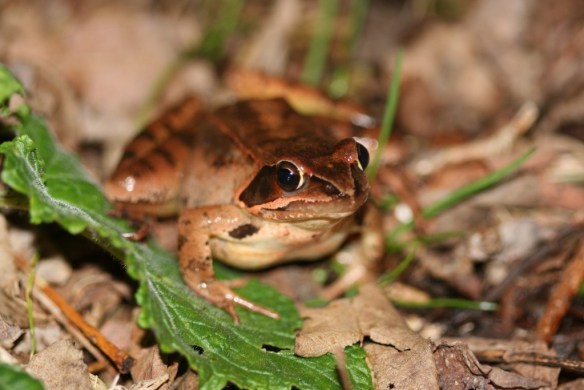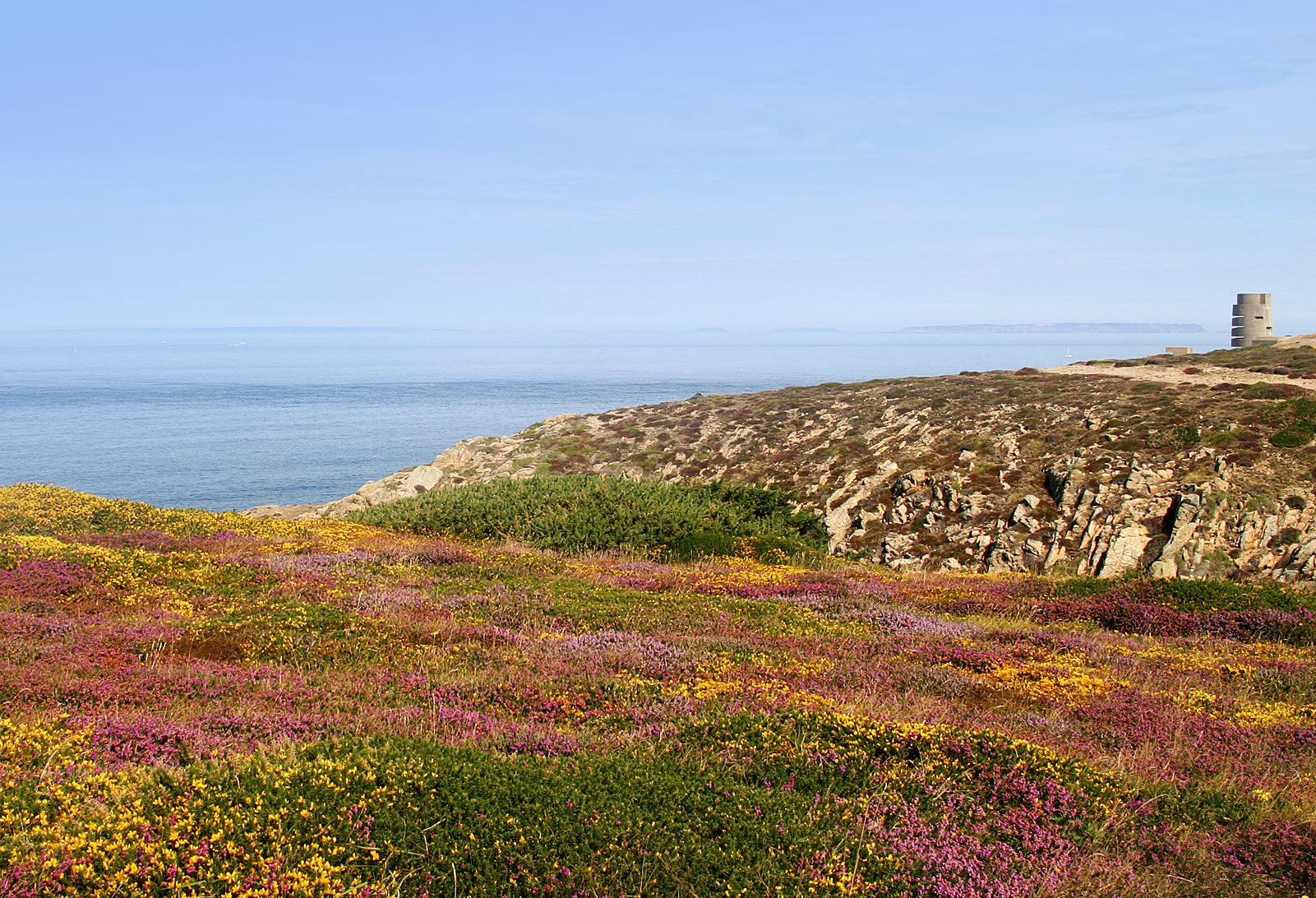 From Science
From Science
A new paper in Science by Franz Bairlein highlights how habitat degradation and loss, illegal killings, and climate change threaten European migratory bird populations.
The populations of migratory bird species that breed in Europe and overwinter in sub-Saharan Africa are declining considerably faster than those of nonmigratory resident species or of migratory species that overwinter in Europe. Likely factors are habitat changes due to changes in land use, illegal killing and taking along the northern African coasts, and climate-induced changes in timing of migration and breeding. However, not only European trans-Saharan migrants are declining fast. This holds also for North American long-distance migrants wintering in Central and South America. To halt these declines, preservation of remaining habitats and restoration of habitats both at breeding and no-breeding grounds is essential, as well as stopping illegal killing and taking of birds along their migration routes.
Illegal killing and taking
Every year, between 11 million and 36 million birds are killed or taken illegally in the Mediterranean region. The areas of greatest concern are in the eastern and central Mediterranean, with more than five million birds taken in both Egypt and Italy and an estimated one million each in Cyprus and Lebanon. Common migratory species such as Eurasian chaffinch, blackcap, and song thrush are most affected, but many less common migratory species are also taken in substantial numbers, including species of global conservation concern such as red kite and Eurasian curlew. On average, the annual illegal killings and takings of threatened or near-threatened migratory bird species amount to 1-3.5% of their populations – percentages that are very likely to have considerable impacts on the fate of these species. Illegal trapping can cause a collapse in population numbers within a short period of time. For example, the yellow-breasted bunting was abundant in its Eurasian breeding range until illegal takings in China caused an 84% population decline between 1980 and 2013.

Habitat degradation and loss
Many European migratory birds that overwinter in sub-Saharan Africa do not travel across those areas of the eastern Mediterranean most affected by illegal killings. Rather, they use a flyway across the western Mediterranean where illegal taking is much less intense. Other factors must play a role in their decline. A large number of European migratory species overwinter in the dry savannas of sub-Saharan Africa. Annual survival of many of these species correlates with rainfall in the Sahel zone. However, despite an increase in rainfall in the Sahel in recent decades, bird populations have continued to decline. Thus, factors other than rainfall must contribute to the population declines. Land-use and landcover changes are the most important. Between 1975 and 2000, agriculture increased by 57% in sub-Saharan Africa at the expense of natural vegetation, with nearly five million hectares of forest and non-forest vegetation lost per year. Most affected are the Sahel and Guinea Savanna zones where the majority of the Eurasian migratory species overwinter. An analysis of breeding-bird survey trends of 26 long-distance migratory species in the United Kingdom shows that wintering habitat is the most important determinant of population trends, with specialist species that occupy either open or woodland habitats in Africa showing declines.
Climate change
Climate change is another major driver for biodiversity changes, including responses of bird populations. Many migratory species, including those that overwinter in sub-Saharan Africa, now arrive earlier at their spring breeding grounds. However, different organisms do not respond to climate change at the same pace, which has led to an ecological mismatch between some consumers and their prey. Dutch pied flycatchers, which overwinter in sub-Saharan Africa, do not arrive earlier at breeding grounds, but the populations of their insect food peak earlier as a result of warmer spring temperatures.
This mismatch between breeding and food availability has caused a decline of up to 90% in Dutch pied flycatcher population sizes. Climate change–induced changes in migratory bird populations are evident in other species too, but their relative contribution to population changes in long-distance migrants wintering requires further clarification.

A global issue
In North America, the Breeding Bird Survey shows that half of the migratory bird species are declining; declines in long-distance Neotropical migrants are more pronounced than those of birds that migrate short distances. As for the European–African migrants, climate mismatch is a factor, but the long-distance migrants are particularly sensitive to habitat changes. Similar patterns might be expected for migratory birds in East Asia, but large-scale and long-term breeding bird population surveys, population trends, and nonbreeding habitat assessments are largely missing for that region.
Outlook
Any attempt to understand and ameliorate migratory bird losses must consider threats far away from their breeding sites. These threats could include killing and taking, human disturbance at staging sites, pesticide exposure, or collisions with human obstacles such as wind turbines and traffic. The most important drivers of population declines in migratory bird species are likely to be land-use changes and connected habitat degradation and loss, but few studies have investigated the specific impacts of land-use and land-cover changes on migratory bird populations in detail. Such studies are urgently needed to disentangle the various factors acting on populations of migratory species.

These studies must include carry-over effects, because conditions at nonbreeding grounds can affect reproductive success in the breeding season. Conversely, conditions at breeding grounds can affect nonbreeding fitness. In the red knot, climate-induced malnutrition at their Arctic breeding grounds resulted in shorter bills and reduced survival rates at their African wintering grounds. Future studies must also consider the role of stopover sites. Most long-distance migratory species rely on considerable fueling at such stopover sites before they embark on migratory flight, particularly if they need to cross oceans or deserts with no or limited feeding opportunities. The main fuel for migratory flights is fat. Consequently, migrants must accumulate enormous amounts of fat before migratory flights, some doubling their body mass within just a few weeks. To achieve that timed fueling, suitable habitats and food must be available at stopover sites. The effect of habitat loss and degradation at stopover sites on population trends in trans-Saharan migrants remains uninvestigated.
Consequently, future studies also need to clarify where species of conservation concern stop over and overwinter, and which migration routes they take. For example, British common cuckoos migrate along two routes to the same winter destination in sub-Saharan Africa. They face a much higher en route mortality when migrating along a western route than along an easterly route. Emerging technologies for tracking individual migratory birds throughout their annual cycle will reveal migratory routes and destinations in more detail than past bird marking, allowing more detailed and frequent assessment of the drivers of migratory species declines.
Existing data can, however, already be translated into immediate conservation actions to halt the decline of these migratory species. Wetlands can be protected from drainage; woody vegetation can be protected from grazing or even be replanted. Such efforts would not only support migratory birds but also the local biodiversity and livelihoods of local farmers and pastoralists. In addition, illegal taking and killing can be stopped. The required political instruments, such as the African–Eurasian Waterbird Agreement and the African–Eurasian Migratory Landbird Action Plan, are already in place. We just need to act, and we can if we wish.


 Earlier this year Birds On the Edge were invited to several very important public events in Jersey including the launch of the
Earlier this year Birds On the Edge were invited to several very important public events in Jersey including the launch of the 



 Sunday 9th October 2016 – Gerard Le Claire woods, St Martin – 10:30-13.00
Sunday 9th October 2016 – Gerard Le Claire woods, St Martin – 10:30-13.00













 From
From 
 Other federal agencies, including the
Other federal agencies, including the  “Studies have shown that living shorelines host greater populations of fish and other organisms crucial for shorebirds and for recreation and commercial fisheries”, said Rachel Gittman, a postdoctoral research associate at
“Studies have shown that living shorelines host greater populations of fish and other organisms crucial for shorebirds and for recreation and commercial fisheries”, said Rachel Gittman, a postdoctoral research associate at  Some organisations are trying to quantify whether living shorelines cost less to build and can provide the same protection. The
Some organisations are trying to quantify whether living shorelines cost less to build and can provide the same protection. The  The traditional use of seawalls and bulkheads has slowly been hardening our coastline and destroying our marsh and wetland environments, which in turn damages the wildlife dependent upon them. A sensible and environmentally friendly alternative, the living shoreline, has been burdened by unnecessarily cumbersome scrutiny. The health of shores is integral to our fishing industry, our tourism appeal, and the coastal way of life
The traditional use of seawalls and bulkheads has slowly been hardening our coastline and destroying our marsh and wetland environments, which in turn damages the wildlife dependent upon them. A sensible and environmentally friendly alternative, the living shoreline, has been burdened by unnecessarily cumbersome scrutiny. The health of shores is integral to our fishing industry, our tourism appeal, and the coastal way of life From the
From the
 It’s not too late to save UK nature but we must act now – that is the conclusion from a coalition of more than 50 leading wildlife and research organisations behind the State of Nature 2016 report.
It’s not too late to save UK nature but we must act now – that is the conclusion from a coalition of more than 50 leading wildlife and research organisations behind the State of Nature 2016 report. 

 As the UK Government and devolved administrations move forward in the light of the EU Referendum result, there is an opportunity to secure world leading protection for our species and restoration of our nature. Now is the time to make ambitious decisions and significant investment in nature to ensure year-on-year improvement to the health and protection of the UK’s nature and environment for future generations.
As the UK Government and devolved administrations move forward in the light of the EU Referendum result, there is an opportunity to secure world leading protection for our species and restoration of our nature. Now is the time to make ambitious decisions and significant investment in nature to ensure year-on-year improvement to the health and protection of the UK’s nature and environment for future generations. “The rallying call issued after the State of Nature report in 2013 has promoted exciting and innovative conservation projects. Landscapes are being restored, special places defended, struggling species being saved and brought back. But we need to build significantly on this progress if we are to provide a bright future for nature and for people.
“The rallying call issued after the State of Nature report in 2013 has promoted exciting and innovative conservation projects. Landscapes are being restored, special places defended, struggling species being saved and brought back. But we need to build significantly on this progress if we are to provide a bright future for nature and for people. The widespread decline of nature in the UK remains a serious problem to this day. For the first time scientists have uncovered how wildlife has fared in recent years. The report reveals that since 2002 more than half (53%) of UK species studied have declined and there is little evidence to suggest that the rate of loss is slowing down.
The widespread decline of nature in the UK remains a serious problem to this day. For the first time scientists have uncovered how wildlife has fared in recent years. The report reveals that since 2002 more than half (53%) of UK species studied have declined and there is little evidence to suggest that the rate of loss is slowing down. “There is a real opportunity for the UK Government and devolved administrations to build on these efforts and deliver the significant investment and ambitious action needed to bring nature back from the brink.
“There is a real opportunity for the UK Government and devolved administrations to build on these efforts and deliver the significant investment and ambitious action needed to bring nature back from the brink.















 As the State of Nature prepares to release its 2016 report that warns Britain’s wildlife is facing a “crisis” with more than 120 species at risk of extinction due to intensive farming, the
As the State of Nature prepares to release its 2016 report that warns Britain’s wildlife is facing a “crisis” with more than 120 species at risk of extinction due to intensive farming, the 
 Another example, and number three on the list, is the
Another example, and number three on the list, is the 




